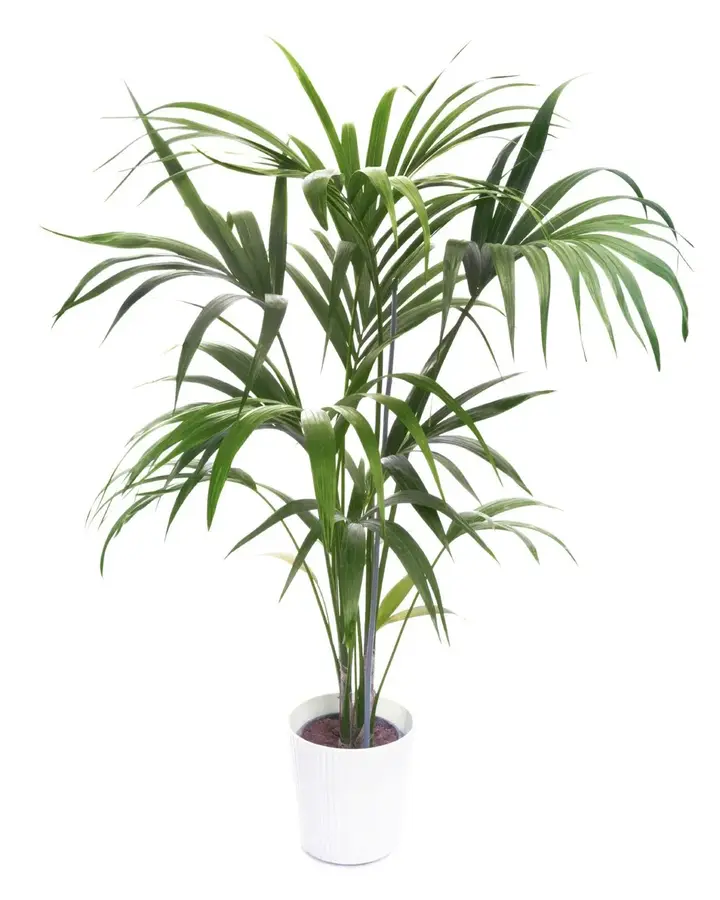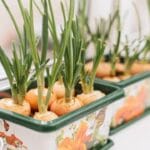
Image Credit – Hema
Are you dreaming of a lush, green oasis inside your home? Look no further than the Howea forsteriana, more commonly known as the Kentia Palm. This elegant, low-maintenance houseplant is a favorite among interior designers and plant enthusiasts alike, and for good reason. Its graceful fronds and upright growth habit can transform any space into a serene, tropical haven.
Why the Howea Forsteriana is Your Next Houseplant Hero

The Kentia Palm has earned its stellar reputation due to a combination of aesthetic appeal and remarkable resilience. Unlike some high-maintenance tropical plants, the Howea forsteriana is surprisingly forgiving, making it an excellent choice for both seasoned plant parents and those just beginning their green journey.
Here’s why this palm stands out:
- Timeless Elegance: With its slender, dark green fronds that arch gracefully, the Kentia Palm exudes sophistication. It doesn’t scream for attention but rather provides a calm, sophisticated backdrop, blending seamlessly with various interior design styles, from modern minimalist to classic traditional.
- Air-Purifying Power: Like many houseplants, the Howea forsteriana contributes to healthier indoor air quality by filtering out common toxins. This makes your living space not just beautiful, but also more breathable.
- Shade Tolerant: One of the Kentia Palm’s most significant advantages is its ability to thrive in lower light conditions. While it appreciates bright, indirect light, it can tolerate more shaded spots where other tropical plants would languish. This flexibility makes it perfect for rooms with limited natural light.
- Pet-Friendly: Good news for pet owners! The Howea forsteriana is non-toxic to cats and dogs, giving you peace of mind while enjoying its beauty.
- Low Maintenance: We’ll dive into care tips shortly, but generally, the Kentia Palm isn’t a fussy plant. It prefers a consistent environment and doesn’t demand constant attention, making it ideal for busy individuals.
Caring for Your Howea Forsteriana: Simple Steps to Success
Bringing a Howea forsteriana into your home is just the first step. Ensuring it thrives requires understanding its basic needs.
1. Light: The Goldilocks Zone
The Kentia Palm prefers bright, indirect light. An east or north-facing window is often ideal. While it tolerates lower light, very dim conditions can slow its growth and make the fronds appear less vibrant. Direct, harsh sunlight should be avoided as it can scorch the leaves.
2. Watering: Less is More (Usually)
Allow the top inch or two of the soil to dry out before watering again. Overwatering is a common killer of Kentia Palms, leading to root rot. When you do water, do so thoroughly until water drains from the bottom of the pot. Reduce watering slightly in the cooler, darker months.
3. Humidity: A Tropical Treat
As a tropical plant, the Howea forsteriana appreciates humidity. If your home air is dry (especially in winter with heating on), consider misting the leaves regularly, placing the pot on a pebble tray filled with water, or using a humidifier nearby. Brown tips on the fronds are often a sign of insufficient humidity.
4. Soil: Well-Draining is Key
Use a good quality, well-draining potting mix. A mix designed for palms or a general houseplant mix amended with perlite or coarse sand for extra drainage works well.
5. Fertilizing: A Little Goes a Long Way
Feed your Howea forsteriana with a balanced liquid fertilizer diluted to half strength during the growing season (spring and summer), about once a month. Reduce or stop fertilizing in fall and winter.
6. Repotting: Infrequent Necessity
Kentia Palms prefer to be a bit root-bound, so they don’t need frequent repotting. Repot only when necessary, typically every 2-3 years, or when you see roots emerging from the drainage holes. Choose a pot only slightly larger than the previous one.
7. Pests and Problems: Stay Vigilant
While generally robust, keep an eye out for common houseplant pests like spider mites or mealybugs. Inspect your plant regularly and treat any infestations promptly with insecticidal soap or neem oil. Yellowing lower fronds are often natural aging, but widespread yellowing can indicate overwatering or nutrient deficiency.
Elevate Your Space with the Howea Forsteriana
The Howea forsteriana is more than just a pretty face; it’s a resilient, air-purifying, and truly elegant houseplant that can bring a touch of the tropics to any indoor environment. Its easy-going nature makes it a fantastic choice for adding sophisticated greenery without the fuss.
If you’re looking to create a serene and inviting atmosphere in your home, the Kentia Palm is undoubtedly a plant worth considering. Let us know in the comments below: Do you have a Howea forsteriana? What are your top tips for keeping it thriving?
Frequently Asked Questions
What are the key benefits of having a Howea Forsteriana (Kentia Palm) as an indoor plant compared to other palms?
The Howea Forsteriana, or Kentia Palm, stands out due to its exceptional shade tolerance, making it ideal for homes with lower light conditions where many other palms would struggle. It’s also renowned for its elegant, upright growth habit, air-purifying qualities, and its non-toxic nature, making it safe for pets. Its relatively slow growth and preference for being slightly root-bound also mean less frequent repotting compared to faster-growing palm varieties.
My Howea Forsteriana’s (Kentia Palm) fronds are turning brown at the tips. What could be the most common reasons for this, and how can I fix it?
Brown tips on a Howea Forsteriana (Kentia Palm) are most commonly caused by low humidity, especially in dry indoor environments or during winter with heating. To fix this, increase humidity by misting regularly, placing the pot on a pebble tray with water, or using a humidifier. Other potential causes include inconsistent watering (both under and overwatering can stress the plant) or a buildup of salts from tap water; try using filtered water or rainwater if possible.
Is the Howea Forsteriana (Kentia Palm) a good choice for beginners, or does it require advanced care?
The Howea Forsteriana (Kentia Palm) is an excellent choice for beginners! While it has specific preferences, it’s remarkably forgiving compared to many other tropical houseplants. It tolerates lower light, doesn’t require constant watering, and isn’t prone to as many common pests as some other plants. Its resilient nature and relatively slow growth rate make it a low-stress, high-reward plant for those new to indoor gardening.







